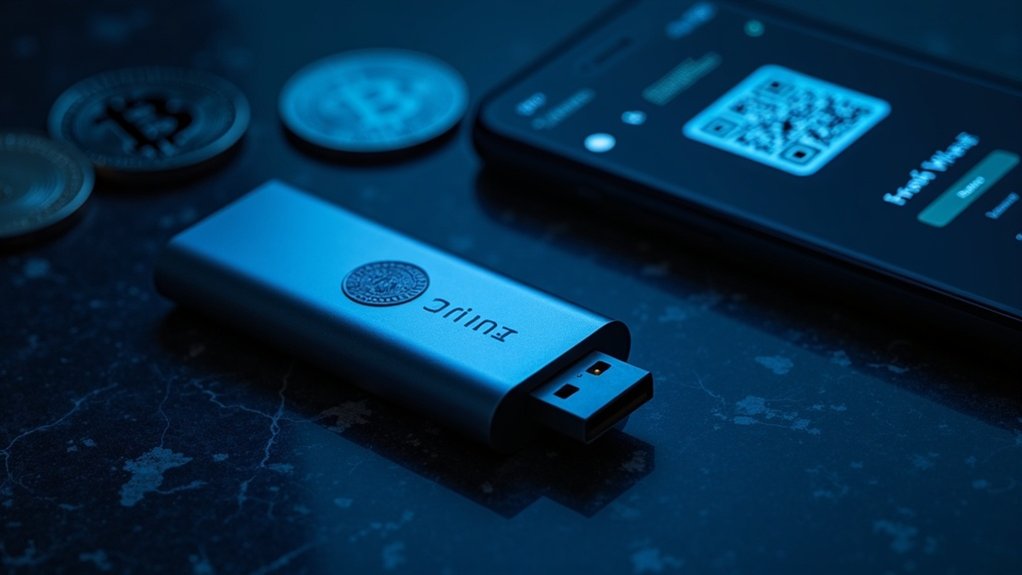A Bitcoin party is an informal gathering where crypto enthusiasts celebrate Bitcoin milestones, particularly the “halving” events that occur every four years. These grassroots meetups foster face-to-face connections among digital communities, transforming online relationships into real-world interactions. Attendees share knowledge, discuss investment strategies, and normalize cryptocurrency through social experiences. From sophisticated conferences to casual bar meetups, these events reflect Bitcoin’s decentralized ethos. The combination of education and celebration creates something uniquely valuable beyond the digital ledger itself.
Excitement crackles through the air. Bodies huddle around screens displaying price charts, and someone’s shouting about blockchain revolution. Welcome to a Bitcoin party. Not your average gathering with cake and party hats. These events celebrate significant Bitcoin milestones, particularly the “halving” – when Bitcoin’s supply issuance gets cut in half.
The electric atmosphere of crypto devotees celebrating digital scarcity—where graphs replace cake and market speculation serves as entertainment.
Bitcoin parties emerged from crypto culture as communal celebrations. They’re not formal organizations or political entities. Just events where Bitcoin enthusiasts gather to geek out over their favorite digital currency. Think of them as community-building exercises where people who might otherwise just interact through online forums get to meet face-to-face.
The Bitcoin halving is a big deal. Every four years, the reward miners receive for verifying transactions drops by 50%. Less new Bitcoin entering circulation means potentially higher scarcity value. People get worked up about this stuff. The 2020 halving sparked parties worldwide – virtual ones too, because, well, pandemic. The declining exchange reserves in 2025 further fueled enthusiasm as more investors moved their Bitcoin to private wallets.
These gatherings serve multiple purposes. Knowledge sharing happens everywhere. Newbies learn from veterans. Investment strategies get swapped over drinks. Technical jargon flies around the room. Some attendees understand it, others pretend to. It’s all part of the experience.
Bitcoin parties humanize what’s fundamentally computer code and financial speculation. They transform digital concepts into social experiences. Sometimes there are speakers, workshops, or demonstrations. Other times it’s just a bunch of crypto nerds comparing hardware wallets. Attendees often discuss the importance of safeguarding their private keys to prevent permanent loss of their bitcoin holdings.
The impact extends beyond mere socializing. These events normalize Bitcoin as a legitimate asset class. They introduce curious newcomers to concepts they might find intimidating online. Media sometimes shows up, amplifying Bitcoin’s visibility.
What makes Bitcoin parties unique is their grassroots nature. No central authority plans them. They happen spontaneously, reflecting Bitcoin’s decentralized ethos. Many participants use hot wallets for convenient cryptocurrency access during demonstrations, despite the higher security risks compared to cold storage methods. Sometimes they’re sophisticated conferences, other times just meetups at local bars.
Bitcoin isn’t just digital money. It’s a movement with its own culture. And Bitcoin parties? They’re where that culture comes alive.
Frequently Asked Questions
How Much Money Should I Bring to a Bitcoin Party?
Most folks bring between $20-200 to Bitcoin parties. It’s enough to make small trades without risking too much.
Bigger amounts? Not smart in casual settings. Transaction fees eat into tiny purchases anyway. Cash works. Digital wallets work too. Depends on the party’s vibe.
Educational events need less, trading gatherings might warrant more. Whatever the amount, security matters.
Don’t flash a fat stack at a crypto meetup. Common sense.
Can I Attend a Bitcoin Party Without Owning Cryptocurrency?
Yes, you can absolutely attend a Bitcoin party without owning cryptocurrency.
Most Bitcoin parties welcome crypto-curious folks alongside seasoned hodlers. They’re designed for networking and education, not just trading.
Many events include beginner workshops and demonstrations where ownership isn’t required. You’ll see transactions happening, learn basics, and meet enthusiasts.
Some parties even offer simulator experiences with test coins. No Bitcoin? No problem. Just bring your curiosity instead.
Are Bitcoin Parties Legal in All Countries?
Bitcoin parties aren’t legal everywhere. Not even close.
In China, they’re completely banned – good luck trying that there.
Countries like the US might allow them but with complicated securities regulations that most party organizers probably don’t understand.
Some nations have no specific laws yet, leaving everything in a legal gray zone.
El Salvador? Different story. They’ve embraced Bitcoin officially.
Bottom line: check local laws before RSVPing to that crypto shindig.
Do Bitcoin Parties Have Age Restrictions?
Yes, Bitcoin parties typically enforce age restrictions.
Most require attendees to be 21 or older with valid photo ID. These restrictions stem from venue policies and local laws, especially when held at nightclubs or bars serving alcohol.
Not about crypto regulations, really. Just standard nightlife rules.
Organizers enforce these limits strictly through ID checks at entry. No exceptions.
Events attract crypto investors and industry professionals in adult-only environments.
Sorry, teens.
What Security Measures Protect Investments Made at Bitcoin Parties?
Security at Bitcoin parties varies wildly.
Smart participants use hardware wallets, verify transactions thoroughly, and never share private keys—period. Some organizers implement multi-sig wallets requiring multiple approvals for transactions.
The savvy ones conduct due diligence on presenters. Reality check: many parties lack formal protections. Attendees often rely on trust more than technology.
Bottom line? Same risks as any crypto investment, just with snacks and socializing thrown in.









